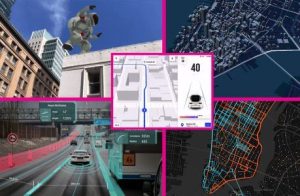
Virtual Reality (VR) is revolutionizing the architectural design and construction industry, seamlessly blending innovation and creativity. This groundbreaking technology allows architects, designers, and builders to experience architectural spaces in a virtual environment before physical construction begins. By simulating realistic 3D visualizations, VR offers immersive experiences that enhance design understanding, client presentations, and collaboration among construction teams. In this article, we explore the pivotal role that Virtual Reality plays in architectural design and construction.
1. Visualizing Conceptual Designs:
One of the significant challenges architects face is effectively conveying their vision to clients. Traditional 2D drawings and renderings limit spatial understanding and often fail to capture the intended ambiance and scale. With Virtual Reality, architects can create a digital representation of their designs that provides a more accurate and immersive experience. By putting on a VR headset, clients and stakeholders can explore and interact with virtual spaces, gaining a realistic understanding of its spatial qualities, materiality, and lighting.
2. Design Collaboration in VR:
Virtual Reality enables seamless collaboration between architects, interior designers, and other stakeholders involved in the design process. Architects can share 3D models with team members, who can then analyze and provide feedback within the virtual environment. This real-time collaboration eliminates the need for time-consuming meetings and improves design decisions by considering multiple perspectives. As a result, design iterations can be streamlined, saving time and reducing costs.
3. Enhancing Building Information Modeling (BIM):
Building Information Modeling (BIM) has transformed the construction industry by creating a digital representation of a building’s components and systems. Incorporating VR into BIM workflows elevates the understanding and communication of complex information. By visualizing BIM models in Virtual Reality, architects, engineers, and contractors can identify and address design clashes, test construction feasibility, and perform virtual walk-throughs, minimizing errors and conflicts during the actual construction phase.
4. Virtual Site Inspections:
Traditionally, architects and construction teams rely on physical site visits to inspect progress and identify any discrepancies. Virtual Reality offers a game-changing alternative by enabling virtual site inspections. Architects can remotely explore the construction site through a VR headset, enabling them to identify any design or construction issues in real time. This not only saves time and reduces travel costs but also minimizes disruptions to the construction schedule.
5. Client Presentations and Marketing:
When presenting architectural designs to clients, Virtual Reality provides an unparalleled advantage. Instead of presenting static images or videos, architects can offer immersive virtual experiences that allow clients to walk through the yet-to-be-built spaces. The ability to showcase various design options, materials, and lighting scenarios enhances client engagement and enables decision-making based on realistic experiences. Furthermore, VR can be utilized for marketing purposes by creating virtual tours for potential buyers, giving them a taste of the final project and driving interest.
Conclusion:
Virtual Reality has emerged as a game-changer in the architectural design and construction industry. By allowing architects and designers to visualize conceptual designs, collaborate effectively, enhance BIM workflows, conduct virtual site inspections, and present immersive experiences to clients, VR has transformed the way architectural projects are conceived, reviewed, and executed. As technology continues to advance, Virtual Reality will undoubtedly play an increasingly pivotal role in shaping the future of architectural design and construction.


